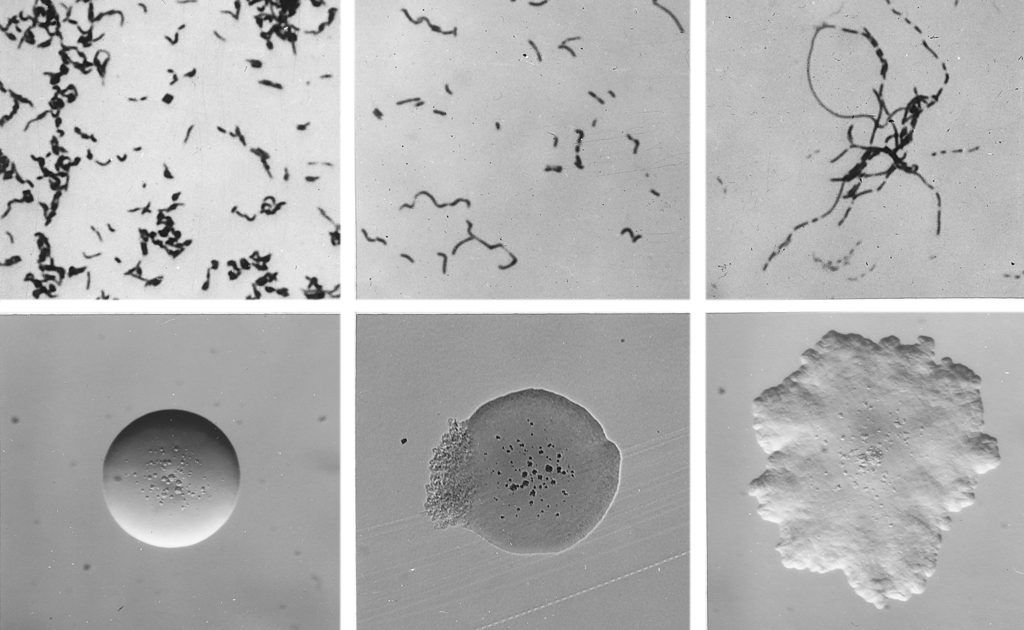Erysipeloid: Difference between revisions
Shanshan Cen (talk | contribs) No edit summary |
|||
| Line 22: | Line 22: | ||
==Treatment== | ==Treatment== | ||
The treatment of choice is a single dose of [[Penicillin#Benzathine|benzathine benzylpenicillin]] given by [[intramuscular injection]], or a five-day to one-week course of either [[penicillin#Phenoxymethylpenicillin/penicillin V|oral penicillin]] or intramuscular [[procaine benzylpenicillin]].<ref name=POC-IT>{{cite web |url=http://prod.hopkins-abxguide.org/pathogens/bacteria/aerobic_gram_positive_bacillus/erysipelothrix_rhusiopathiae.html |title=''Erysipelothrix rhusiopathiae'' |author=Vinetz J |date=October 4, 2007 |work=Point-of-Care Information Technology ABX Guide |publisher=[[Johns Hopkins University]]}} Retrieved on October 28, 2008. Freely available with registration.</ref> [[Erythromycin]] or [[doxycycline]] may be given instead to people who are allergic to penicillin. ''E. rhusiopathiae'' is intrinsically [[antibiotic resistance|resistant]] to [[vancomycin]].<ref name=POC-IT/> | The treatment of choice is a single dose of [[Penicillin#Benzathine|benzathine benzylpenicillin]] given by [[intramuscular injection]], or a five-day to one-week course of either [[penicillin#Phenoxymethylpenicillin/penicillin V|oral penicillin]] or intramuscular [[procaine benzylpenicillin]].<ref name=POC-IT>{{cite web |url=http://prod.hopkins-abxguide.org/pathogens/bacteria/aerobic_gram_positive_bacillus/erysipelothrix_rhusiopathiae.html |title=''Erysipelothrix rhusiopathiae'' |author=Vinetz J |date=October 4, 2007 |work=Point-of-Care Information Technology ABX Guide |publisher=[[Johns Hopkins University]]}} Retrieved on October 28, 2008. Freely available with registration.</ref> [[Erythromycin]] or [[doxycycline]] may be given instead to people who are allergic to penicillin. ''E. rhusiopathiae'' is intrinsically [[antibiotic resistance|resistant]] to [[vancomycin]].<ref name=POC-IT/> | ||
===Antimicrobial Regimen=== | ===Antimicrobial Regimen=== | ||
:* Preferred regimen (1): [[Penicillin]] 500 mg qid for 7–10 days | |||
:* Preferred regimen (2): [[Amoxicillin]] 500 mg tid for 7–10 days | |||
* Erysipelothrix rhusiopathiae <ref>{{cite book | last = Bartlett | first = John | title = Johns Hopkins ABX guide : diagnosis and treatment of infectious diseases | publisher = Jones and Bartlett Learning | location = Burlington, MA | year = 2012 | isbn = 978-1449625580 }}</ref> | * Erysipelothrix rhusiopathiae <ref>{{cite book | last = Bartlett | first = John | title = Johns Hopkins ABX guide : diagnosis and treatment of infectious diseases | publisher = Jones and Bartlett Learning | location = Burlington, MA | year = 2012 | isbn = 978-1449625580 }}</ref> | ||
:*1. '''Erysipeloid of Rosenbach (localized cutaneous infection)''' | :*1. '''Erysipeloid of Rosenbach (localized cutaneous infection)''' | ||
Revision as of 13:14, 13 August 2015
| Erysipeloid | |
 | |
|---|---|
| Cellular and colonial morphology of Erysipelothrix rhusiopathiae | |
| ICD-10 | A26 |
| ICD-9 | 027.1 |
| DiseasesDB | 4432 |
| MedlinePlus | 000632 |
| eMedicine | derm/602 |
| MeSH | D004887 |
Editor-In-Chief: C. Michael Gibson, M.S., M.D. [1]
Overview
In humans, Erysipelothrix rhusiopathiae infections most commonly present in a mild cutaneous form known as erysipeloid[1] or fish poisoning.[2] E. rhusiopathiae can cause an indolent cellulitis, more commonly in individuals who handle fish and raw meat.[3] It gains entry typically by abrasions in the hand. Bacteremia and endocarditis are uncommon but serious sequelae.[4][5] Due to the rarity of reported human cases, E. rhusiopathiae infections are frequently misidentified at presentation.[1]
Treatment
The treatment of choice is a single dose of benzathine benzylpenicillin given by intramuscular injection, or a five-day to one-week course of either oral penicillin or intramuscular procaine benzylpenicillin.[6] Erythromycin or doxycycline may be given instead to people who are allergic to penicillin. E. rhusiopathiae is intrinsically resistant to vancomycin.[6]
Antimicrobial Regimen
- Preferred regimen (1): Penicillin 500 mg qid for 7–10 days
- Preferred regimen (2): Amoxicillin 500 mg tid for 7–10 days
- Erysipelothrix rhusiopathiae [7]
- 1. Erysipeloid of Rosenbach (localized cutaneous infection)
- Preferred regimen (1): Penicillin G benzathine 1.2 MU IV single dose
- Preferred regimen (2): Penicillin VK 250 mg PO qid for 5-7 days
- Preferred regimen (3): Procaine penicillin 0.6-1.2 MU IM qd for 5-7 days
- Alternative regimen (1): Erythromycin 250 mg PO qid for 5-7 days
- Alternative regimen (2): Doxycycline 100 mg PO bid for 5-7 days
- 2. Diffuse cutaneous infection
- Preferred regimen: See localized infection
- 3. Bacteremia or endocarditis
- Preferred regimen: Penicillin G benzathine 2-4 MU IV q4h for 4-6 weeks
- Alternative regimen (1): Ceftriaxone 2 g IV q24h for 4-6 weeks
- Alternative regimen (2): Imipenem 500 mg IV q6h for 4-6 weeks
- Alternative regimen (3): Ciprofloxacin 400 mg IV q12h for 4-6 weeks
- Alternative regimen (4): Daptomycin 6 mg/kg IV q24h for 4-6 weeks
- Note: Recommended duration of therapy for endocarditis is 4 to 6 weeks, although shorter courses consisting of 2 weeks of intravenous therapy followed by 2 to 4 weeks of oral therapy have been successful.
See also
References
- ↑ 1.0 1.1 Brooke C, Riley T (1999). "Erysipelothrix rhusiopathiae: bacteriology, epidemiology and clinical manifestations of an occupational pathogen". J Med Microbiol. 48 (9): 789–99. doi:10.1099/00222615-48-9-789. PMID 10482289.
- ↑ "THE SHIP CAPTAIN'S MEDICAL GUIDE" (PDF). p. 190.
- ↑ Lehane L, Rawlin G (2000). "Topically acquired bacterial zoonoses from fish: a review". Med J Aust. 173 (5): 256–9. PMID 11130351.
- ↑ Brouqui P, Raoult D (2001). "Endocarditis due to rare and fastidious bacteria". Clin Microbiol Rev. 14 (1): 177–207. doi:10.1128/CMR.14.1.177-207.2001. PMC 88969. PMID 11148009.
- ↑ Nassar I, de la Llana R, Garrido P, Martinez-Sanz R (2005). "Mitro-aortic infective endocarditis produced by Erysipelothrix rhusiopathiae: case report and review of the literature". J Heart Valve Dis. 14 (3): 320–4. PMID 15974525.
- ↑ 6.0 6.1 Vinetz J (October 4, 2007). "Erysipelothrix rhusiopathiae". Point-of-Care Information Technology ABX Guide. Johns Hopkins University. Retrieved on October 28, 2008. Freely available with registration.
- ↑ Bartlett, John (2012). Johns Hopkins ABX guide : diagnosis and treatment of infectious diseases. Burlington, MA: Jones and Bartlett Learning. ISBN 978-1449625580.